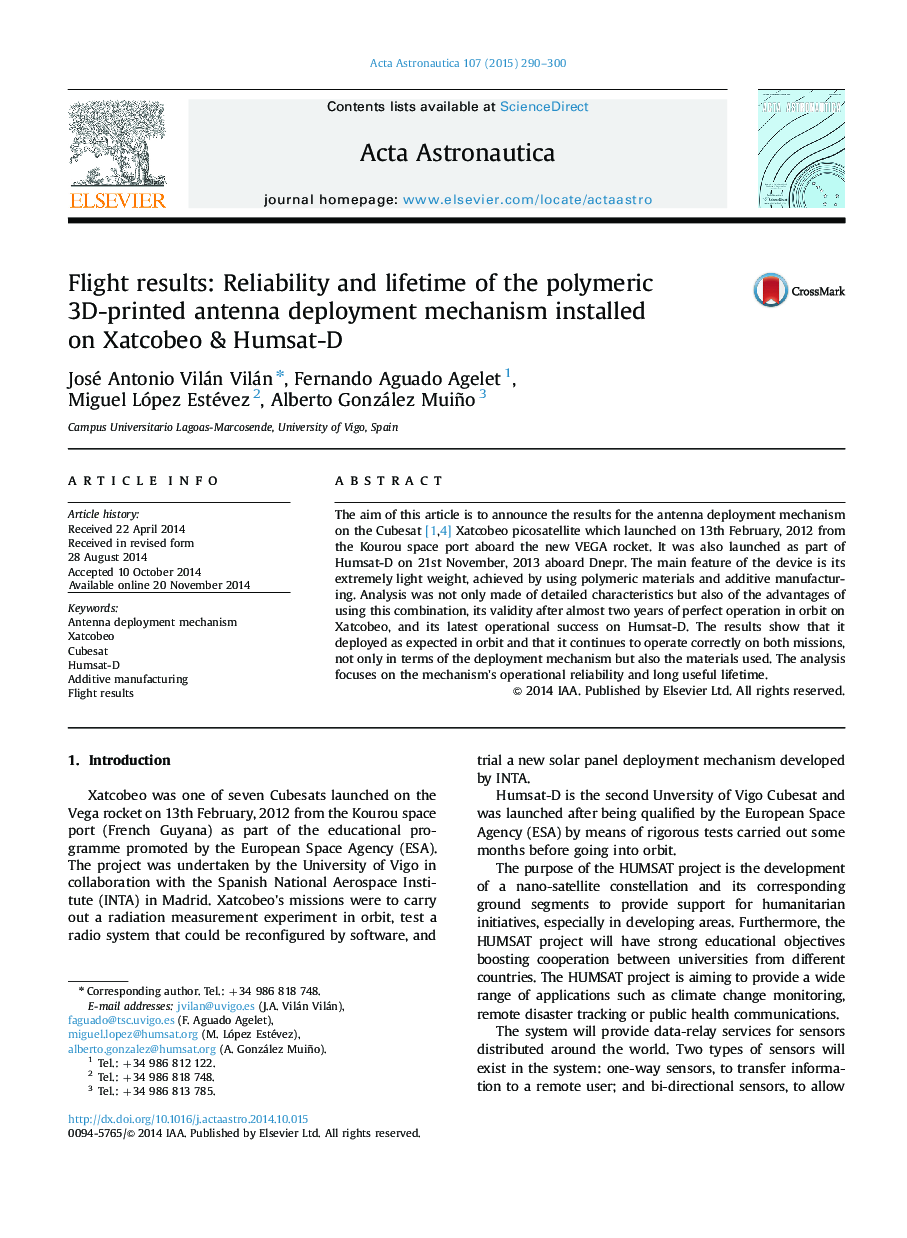| Article ID | Journal | Published Year | Pages | File Type |
|---|---|---|---|---|
| 1714490 | Acta Astronautica | 2015 | 11 Pages |
•Polymeric compound material and rapid prototype manufacturing. Only 15 g.•Validated by the flight and over two years of operation in orbit. Materials OK.•No deterioration through outgassing or radiation effects during Xatcobeo mission.•Telemetry sent by Humsat-D showed a perfect second deployment in space.•High reliability in terms of working and life in space.
The aim of this article is to announce the results for the antenna deployment mechanism on the Cubesat [1] and [4] Xatcobeo picosatellite which launched on 13th February, 2012 from the Kourou space port aboard the new VEGA rocket. It was also launched as part of Humsat-D on 21st November, 2013 aboard Dnepr. The main feature of the device is its extremely light weight, achieved by using polymeric materials and additive manufacturing. Analysis was not only made of detailed characteristics but also of the advantages of using this combination, its validity after almost two years of perfect operation in orbit on Xatcobeo, and its latest operational success on Humsat-D. The results show that it deployed as expected in orbit and that it continues to operate correctly on both missions, not only in terms of the deployment mechanism but also the materials used. The analysis focuses on the mechanism׳s operational reliability and long useful lifetime.
